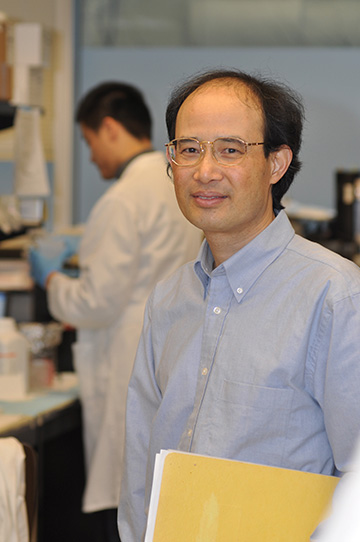July 18, 2019
Libin scientist published in Nature

Dr. S.R. Wayne Chen and Dr. Nieng Yan at Tsinghua University, Beijing, China, led a collaborative research project that revealed how a tiny molecule, calmodulin, modulates the cardiac ryanodine receptor, the heart’s calcium gateway.
The article, “Modulation of cardiac ryanodine receptor 2 by calmodulin,” was recently published in the prestigious journal Nature.
"Dr. Chen's has been a world leader in our understanding of the role of the ryanodine receptor as it pertains to cardiac disease,” says Dr. Todd Anderson, MD, director of the Libin Cardiovascular Institute of Alberta. “The publication of this latest work in Nature speaks to the importance of his discoveries."
Scientists have long known that calcium release from and reuptake back to the sarcoplasmic reticulum, a membrane-bound structure found in muscle cells that is used to store calcium, within the cells of the heart is responsible for causing contraction and relaxation of the heart.
Previously, Chen’s lab showed that calmodulin is involved in the termination of calcium release from the sarcoplasmic reticulum that is critical for the relaxation of the heart, but the molecular basis of this calmodulin action remained a mystery.
Now, scientists know that calmodulin is one of the key modulators necessary for the opening and closing of the ryanodine receptor calcium gateway.
Scientists used a powerful electron microscope to view how calmodulin—a very common molecule within the body of all vertebrates that modulates numerous cellular processes—shifts from one location to another, triggered by calcium, within the ryanodine receptor molecule, allowing it to open and close during heart beats.
Chen is excited about the discovery.
“Once you know the exact details of the machine, you can pinpoint how it works,” says Chen, noting comprehending the intracellular processes is fundamental to understanding how defective calmodulin function could lead to heart problems.
For example, Chen is now looking at whether and how calmodulin dysfunction leads to beat-to-beat variations in heart rate.
